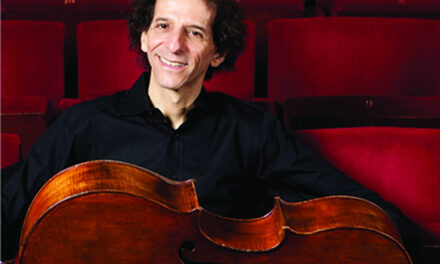Until recently, even record collectors had difficulty finding recordings of Mendelssohn’s Quintet for Strings, in A, Op. 18. Live performances are just as rare, so hearing it as part of the first program of the Eastern Chamber Players in Dana Auditorium July 6 was a real treat.
Mendelssohn composed his first string quintet in 1826, a year after his more famous String Octet. The octet had been composed for his violinist friend, Eduard Rietz, and he probably intended the first violin part of the quintet for his friend, too. When Rietz died in January 1832, the composer wrote a new slow movement – Intermezzo: Andante sostenuto (in memoriam). Like Mozart’s quintets, Mendelssohn’s is scored for two violins, two violas, and cello. The first violin part is very prominent throughout the piece. Unlike the gossamer scherzo of the beloved octet, the quintet wears heavier garb in the form of extensive fugal writing, but the fast-paced finale has a scherzo-like character and some lively syncopations.
The Eastern Music Festival’s Eastern Chamber Players consist of members of the large professional faculty and each week’s featured guest musician. Befitting the central role of the first violin in the quintet, guest Charles Castleman displayed considerable elegance and refined bowing. A former prizewinner in the Tchaikovsky and Brussels competitions, he plays a Stradivarius and Groffriller from 1708 and chooses from among 60 bows. He used the Strad for this concert. His colleagues – violinist Jacqueline Saed, violists Barbara Hamilton and Suzanne Rousso, and cellist Neal Cary – all had warm rich tones and blended well with him.
The concert opened with a hint of rusticity. Mozart’s Serenade No. 11, in E-flat, K.375 received a glowing performance with tight ensemble and closely-matched sound among its pairs of instruments. Shannon Scott strongly characterized the prominent first clarinet part, joined by Judith Donaldson. The others were oboists Eric Olson and Susan Eischeid, bassoonists Cedric Colemann and Karla Ekholm, and Amy Trotz and Kevin Reid, the hearty horn players. I have heard many good performances of this work but I have never heard the bassoon parts better played than on this occasion.
In order to make money after he settled permanently in Vienna, Mozart composed several piano concertos with all the essential orchestral parts in the strings and the winds supplying only color. This allowed publication of reductions for piano and string quartet that could be played at home by amateurs of the aristocracy and the new Middle Class. The Piano Concerto No. 12 in A, K.414, played by James Giles, is an example of these works. He was joined by violinists Jennifer Richard and Penny Kruse, violist Steven Kruse, and cellist Christopher Hutton. Giles’ exposition of the piano part was a master class in classical style, featuring polished lines, clear articulation of the fastest passages, and close attention to his fellow players. The balances were fine. My only reservation was the relatively lackluster tone of the leader’s violin.











